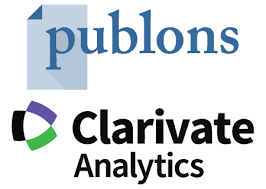L' Analyse de l'utilisation des services bancaires en ligne par les clients des banques commerciales à Bukavu, RDC
DOI :
https://doi.org/10.59051/joaf.v15i2.823Mots-clés :
anglais, E-banking, Banques, Clients, RDCRésumé
Objectif : Cette étude vise à identifier les déterminants de l’adoption et de l’utilisation de la banque en ligne par les clients des banques commerciales à Bukavu.
Méthode : Un cadre conceptuel basé sur le modèle UTAUT a été développé, suivi d’un tri à plat et d’analyses économétriques des données d’une enquête menée auprès d’un échantillon de 215 clients. La régression logistique et le modèle Logit ordonné nous ont permis de répondre à notre question de recherche.
Résultats : L’utilité perçue et l’influence sociale, modulées par la profession et le niveau d’éducation, favorisent la probabilité d’adopter la banque en ligne. En revanche, le coût perçu a un impact négatif. La confiance diminue la probabilité d’utiliser une large gamme de services bancaires en ligne, tandis que le genre, la profession et la note de l’application ont des effets positifs sur l’utilisation.
Originalité / pertinence : En plus d’une méthodologie combinant les modèles logit et logit ordonné, l’originalité de ce travail réside dans l’aspect analytique axé sur le nombre de services bancaires en ligne utilisés par les clients dans un contexte de pays en développement.
Téléchargements
Références
Ahmed, S., & Sur, S. (2023). Change in the uses pattern of digital banking services by Indian rural MSMEs during demonetization and Covid-19 pandemic-related restrictions. Vilakshan – XIMB Journal of Management, 20 (1), 166-192. https://doi.org/10.1108/XJM-09-2020-0138
Ailli, S. (2014). Practice of e-banking by banking customers (individuals) in Morocco: Marketing constraints and opportunities. Revue Marocaine de Recherche en Management et Marketing, 9 (10), 61-79.
Ajzen I. (1991), "The theory of planned behaviour", Organizational Behavior and Human Decision Processes, 50 (2), 179–211.
Akbar, J., Mohan, C., Subramani, A. K., & Sasikala, M. S. (2020). Examining the factors influencing adoption of e-banking services in Chennai City. Serbian Journal of Management, 15 (2), 181-192. https://doi.org/10.5937/sjm15-20323
Alarifi, A., Alsaleh, M., & Alomar, N. (2017). A model for evaluating the security and usability of e-banking platforms. Computing, 99 (5), 519-535. https://doi.org/10.1007/s00607-017-0546-9
Allen, F., Gu, X., & Jagtiani, J. (2022). Fintech, Cryptocurrencies, and CBDC: Financial Structural Transformation in China. Journal of International Money and Finance, 124, 102625. https://doi.org/10.1016/j.jimonfin.2022.102625
Amin, H., & Ramayah, T. (2010). SMS Banking: Explaining the Effects of Attitude, Social Norms and Perceived Security and Privacy. The Electronic Journal of Information Systems in Developing Countries, 41 (1), 1-15. https://doi.org/10.1002/j.1681-4835.2010.tb00291.x
Ananda, S., Devesh, S., & Al Lawati, A. M. (2020). What factors drive the adoption of digital banking? An empirical study from the perspective of Omani retail banking. Journal of Financial Services Marketing, 25(1-2), 14-24. https://doi.org/10.1057/s41264-020-00072-y
Ashoer, M., Jebarajakirthy, C., Lim, X.-J., Mas’ud, M., & Sahabuddin, Z. A. (2024). Mobile fintech, digital financial inclusion, and gender gap at the bottom of the pyramid: An extension of mobile technology acceptance model. Procedia Computer Science, 234, 1253-1260. https://doi.org/10.1016/j.procs.2024.03.122
Baetschmann, G., Staub, K. E., & Winkelmann, R. (2015). Consistent Estimation of the Fixed Effects Ordered Logit Model. Journal of the Royal Statistical Society Series A: Statistics in Society, 178(3), 685-703. https://doi.org/10.1111/rssa.12090
Bauer, K., & Hein, S. E. (2006). The effect of heterogeneous risk on the early adoption of Internet banking technologies. Journal of Banking & Finance, 30, 1713-1725.
Bellahcene, M., & Khedim, M. M. (2016). Factors influencing the adoption of e-banking by customers of Algerian banks. Economie & Société, 12, 71-85.
Bertsch, C., Hull, I., Qi, Y., & Zhang, X. (2020). Bank misconduct and online lending. Journal of Banking & Finance, 116, 105822. https://doi.org/10.1016/j.jbankfin.2020.105822
Birbirsa, Z. A., Teferi, E., & Hailu, T. (2019). Assessing the determinants for the adoption of e-banking services: The case of Dashen bank. Centre for Financial and Monetary Research, Bucharest, 3 (85), 66-78
Bisimwa, A., Nuwagaba, D., & Musigire, S. (2019). Perceived Service Quality, Trust, Customer Satisfaction and Customer Loyalty in the Banking Sector of Bukavu (East of DR Congo). Journal of Business and Management Sciences, 7(3), 100-111. https://doi.org/10.12691/jbms-7-3-1
Bisoka, A. N., Mudinga, E. M., & Herdt, T. D. (2021). Bukavu: Exploratory study on the city. African Cities Research Consortium, 1-9.
Bobillier-Chaumon, M.-E., Dubois, M., & Retour, D. (2003). E-banking : Nouveaux services, nouveaux usages, nouvelles competences. XXXVIIIème Congrès de la SELF, 209-217
Bourbonnais, R. (2015). Econometrics (9e ed.). Dunod.
Bourbonnais, R. (2021). Econometrics (11e ed.). Dunod.
Brahim, S. B. (2014). Typology of consumer resistance to e-banking adoption. International Journal of Innovation and Scientific Research, 6 (2), 141-148.
Brangier, É., Dufresne, A., & Hammes-Adelé, S. (2010). Approche symbiotique de la relation humain-technologie : Perspectives pour l’ergonomie informatique. Le travail humain, 72 (4), 333-353. https://doi.org/10.3917/th.724.0333
Breen, R., Karlson, K. B., & Holm, A. (2018). Interpreting and Understanding Logits, Probits, and Other Nonlinear Probability Models. Annual Review of Sociology, 44(1), 39-54. https://doi.org/10.1146/annurev-soc-073117-041429
Cai, Y., Huang, Z., & Zhang, X. (2024). FinTech adoption and rural economic development: Evidence from China. Pacific-Basin Finance Journal, 83, 102264. https://doi.org/10.1016/j.pacfin.2024.102264
Cheikho, A. (2015). Customer adoption of technological innovations and its impact on the customer relationship-Case of mobile banking -. Working paper.
Collett, D. (2002). Modelling Binary Data (2nd ed.). Chapman and Hall/CRC. https://doi.org/10.1201/b16654
Davis, F. D. (1989). Perceived Usefulness, Perceived Ease of Use, and User Acceptance of Information Technology. MIS Quarterly, 13(3), 319-340. https://doi.org/10.2307/249008
Davis, F.D., Bagozzi, R.P. et Warshaw, P.R., (1992)." Extrinsic and intrinsic motivation to use computers in the workplace», Journal of Applied Social Psychology, 22 (14), 11-32.
DeYoung, R., Lang, W. W., & Nolle, D. L. (2007). How the Internet affects output and performance at community banks. Journal of Banking & Finance, 31 (4), 1033-1060.
Fishbein, M.A. et Ajzen, I. (1975), " Belief, attitude, intention and behavior: an introduction to theory and research, Reading ", MA, Addison Wesley.
Griffin, J. M., Kruger, S., & Mahajan, P. (2023). Did FinTech Lenders Facilitate PPP Fraud? The Journal of Finance, 78(3), 1777-1827. https://doi.org/10.1111/jofi.13209
Halime, Z. F., & Kirmi, B. (2016). Investigating resistance to mobile banking adoption and use. International Journal of Business & Economic Strategy, 5(2), 62-72.
Hasan, M., & Dridi, J. (2010). The Effects of the Global Crisis on Islamic and Conventional Banks: A Comparative Study. Working Paper.
Hernández-Murillo, R., Llobet, G., & Fuentes, R. (2010). Strategic online banking adoption. Journal of Banking & Finance, 34, 1650-1663.
Hewavitharana, T., Nanayakkara, S., Perera, A., & Perera, P. (2021). Modifying the Unified Theory of Acceptance and Use of Technology (UTAUT) Model for the Digital Transformation of the Construction Industry from the User Perspective. Informatics, 8(4), 81. https://doi.org/10.3390/informatics8040081
Hilbe, J. M. (2009). Logistic Regression Models (1st ed.). Chapman and Hall/CRC. https://doi.org/10.1201/9781420075779
Hussain, Z., Das, D., Bhutto, Z. A., Hammad-u-Salam, M., Talpur, F., & Rai, G. (2017). E-Banking Challenges in Pakistan: An Empirical Study. Journal of Computer and Communications, 05(02), 1-6. https://doi.org/10.4236/jcc.2017.52001
Im, I., Kim, Y., & Han, H. J. (2008). The effects of perceived risk and technology type on users’ acceptance of technologies, Information & Management, 45,1-9
Indrasari, A., Nadjmie, N., & Endri, E. (2022). Determinants of satisfaction and loyalty of e-banking users during the COVID-19 pandemic. International Journal of Data and Network Science, 6(2), 497-508. https://doi.org/10.5267/j.ijdns.2021.12.004
Jacquemot, P. (2013). Economic outlook for sub-Saharan Africa. Questions and scenarios. L’Economie politique, 59(3), 6-33. https://doi.org/10.3917/leco.059.0006
Kannabiran, G., & Narayan, P. C. (2005). Deploying Internet banking and e-commerce-Case study of a private-sector bank in India. Information Technology for Development, 11(4), 363-379. https://doi.org/10.1002/itdj.20025
Keil, J., & Ongena, S. (2024). The demise of branch banking – Technology, consolidation, bank fragility. Journal of Banking & Finance, 158, 107038. https://doi.org/10.1016/j.jbankfin.2023.107038
Khan, D. H. F. (2017). E-Banking: Benefits and Issues. American Research Journal of Business and Management, 3(1), 1-7.
Kupesa, T. B. (2017). Banking issues of the non-urban state agents of isea mvuazi at kongo central province in Dr congo. Journal of Asian and African Social Science and Humanities, 3(3), 2017, 1-11.
Lee, M.C. (2009). Factors Influencing the Adoption of Internet Banking : an Integration of TAM and TPB with Perceived Risk and Perceived Benefit. Electronic Commerce Research and Applications, 8(3), 130-141.
Malarvizhi, V., & Geetha, K. T. (2019). An Empirical Investigation on Users and Non-Users Perception About E-Banking Services in Coimbatore City. Journal of Economic & Management Perspectives, 13(2), 14-24.
Maury, Y. (2011). Information, pouvoir d’agir, compétences, capacités : Around the words autonomisation and empowerment. Médiadoc, 7, 11-14.
McCullagh, p. (1980). Regression models for ordinal data. Journal of the Royal Statistical Society, 42(2), 109-127.
Menard, S. (2002). Applied logistic regression analysis (Second Edition), Lewis-Beck.
Mer, A., & Virdi, A. S. (2023a). Modeling Millennials’ Adoption Intentions of E-banking: Extending UTAUT with Perceived Risk and Trust. FIIB Business Review, 12(4), 425-438. https://doi.org/10.1177/23197145211052614
Min, Q., Ji, S. et Qu, G. (2008), " Mobile Commerce User Acceptance Study in China: A Revised UTAUT Model ", Tsinghua Science and Technology, 13 (3), 257–264.
Nathiya, T., & Janaki Priya, K. (2023). Analysis of Electronic Banking and Information Technology using the TOPSIS Method. REST Journal on Banking, Accounting and Business, 2(2), 32-41. https://doi.org/10.46632/jbab/2/2/4
Njangala, C. J., & Irenge, A. M. (2023). Inclusion financière des membres (clients) des institutions du système financier décentralisé (isfds) de bukavu. Akofena, 2(7), 135-152.
O’Brien, S. M., & Dunson, D. B. (2004). Bayesian Multivariate Logistic Regression. Biometrics, 60(3), 739-746. https://doi.org/10.1111/j.0006-341X.2004.00224.x
Ravnbøl, C. I. (2023). Accessing cash(lessness): Cash dependency, debt, and digital finance in a marginalized Roma neighborhood. Economic Anthropology, 10(1), 44-54. https://doi.org/10.1002/sea2.12265
Retherford, R. D., & Choe, M. K. (1993). Statistical Models for Causal Analysis (1re ed.). Wiley. https://doi.org/10.1002/9781118033135
Rogers, E.M. (1995), "Diffusion of innovations ", 4ème édition. New York, Free Press.
Sandhu, S. (2023). Understanding the Drivers of E-Banking Adoption for Enhanced Customer Engagement. The IUP Journal of Bank Management, 22 (3), 24-46.
Shannak, R. O. (2013). Key issues in e-banking strengths and weaknesses: The case of two jordanian banks. European Scientific Journal, 9(7), 239-263.
Sisay, G. (2018). Determinants of Female-Headed Households’ Participation in Periurban Modern Small-Scale Irrigation Projects in Ethiopia: The Case of Kobo Town. Irrigation and Drainage, 67(5), 670-683. https://doi.org/10.1002/ird.2283
Sripalawat, J., Thongmak, M., & Ngramyarn, A. (2011). M-banking in metropolitan Bangkok and a comparison with other countries. The Journal of Computer Information Systems, 51(3), 67-76.
Stoica, O., Mehdian, S., & Sargu, A. (2015). The Impact of Internet Banking on the Performance of Romanian Banks: DEA and PCA Approach. Procedia Economics and Finance, 20, 610-622. https://doi.org/10.1016/S2212-5671(15)00115-X
Su, T., Tao, Y., & Wang, J. (2024). FinTech adoption and the clustered development of rural e-commerce: Evidence from Taobao Village. Pacific-Basin Finance Journal, 85, 102315. https://doi.org/10.1016/j.pacfin.2024.102315
Taylor, S. et Todd, P.A. (1995), " Understanding Information Technology Usage: A Test of Competing Model ", Information Systems Research, 6 (2), 144-176.
Thompson, R.L., Higgins, C.A et Howell, J.M. (1991), " Personal computing: Towards a conceptual model of utilization", MIS Quarterly, 15 (1), 125-142.
Uppal, D. R. K., & Bala, R. (2017). A study of awareness and usage level of customers towards e-banking services in semi-urban area of mansa district. AGU International Journal of Research in Social Sciences & Humanities, 5, 523-532.
Venkatesh, V., Davis, F., Morris, M., & University of Virginia (2007). Dead Or Alive? The Development, Trajectory and Future of Technology Adoption Research. Journal of the Association for Information Systems, 8(4), 267-286. https://doi.org/10.17705/1jais.00120
Venkatesh, Morris, Davis, G., & Davis. F. (2003). User Acceptance of Information Technology: Toward a Unified View. MIS Quarterly, 27(3), 425-478. https://doi.org/10.2307/30036540.
Yang, T., & Zhang, X. (2022). FinTech adoption and financial inclusion: Evidence from household consumption in China. Journal of Banking & Finance, 145, 106668. https://doi.org/10.1016/j.jbankfin.2022.106668
Yang, T., & Zhou, B. (2024). Local FinTech development, industrial structure, and north-south economic disparity in China. International Review of Financial Analysis, 93, 103119. https://doi.org/10.1016/j.irfa.2024.103119
Zagalaz, R., & Díaz, I. (2019). Educational level and Internet banking. Journal of Behavioral and Experimental Finance, 22, 31-40. https://doi.org/10.1016/j.jbef.2019.01.004
Zhu, X. (2023). Exploring the Advantages and Insights of e-Banking Development in Hong Kong. Journal of Business and Management Studies, 5(2), 57-60. https://doi.org/10.32996/jbms.2023.5.2.6
Téléchargements
Publié-e
Comment citer
Numéro
Rubrique
Licence
(c) Tous droits réservés Crispin Jean Chris MUKAMBA BYAMUNGU 2025

Cette œuvre est sous licence Creative Commons Attribution - Pas d'Utilisation Commerciale - Pas de Modification 4.0 International.
Les auteurs qui publient dans cette revue acceptent les termes suivants :
- Les auteurs conservent le droit d'auteur et accordent à la revue le droit de première publication, l'ouvrage étant alors disponible simultanément, sous la licence Licence d’attribution Creative Commons permettant à d'autres de partager l'ouvrage tout en en reconnaissant la paternité et la publication initiale dans cette revue.
- Les auteurs peuvent conclure des ententes contractuelles additionnelles et séparées pour la diffusion non exclusive de la version imprimée de l'ouvrage par la revue (par ex., le dépôt institutionnel ou la publication dans un livre), accompagné d'une mention reconnaissant sa publication initiale dans cette revue.
- Les auteurs ont le droit et sont encouragés à publier leur ouvrage en ligne (par ex., dans un dépôt institutionnel ou sur le site Web d'une institution) avant et pendant le processus de soumission, car cela peut mener à des échanges fructueux ainsi qu'à un nombre plus important, plus rapidement, de références à l’ouvrage publié (Voir The Effect of Open Access).






















